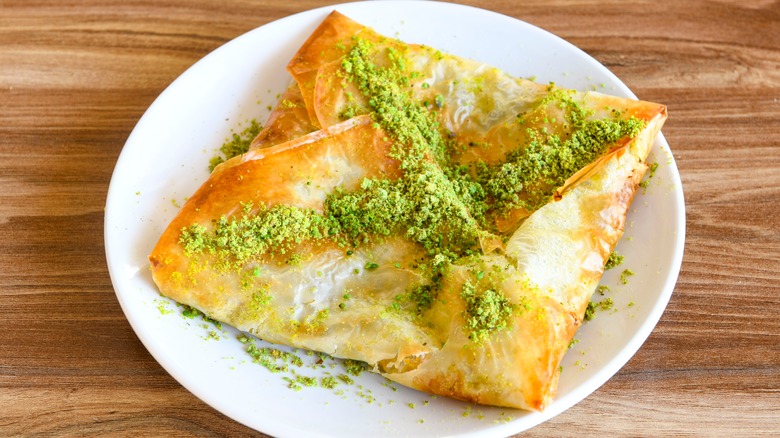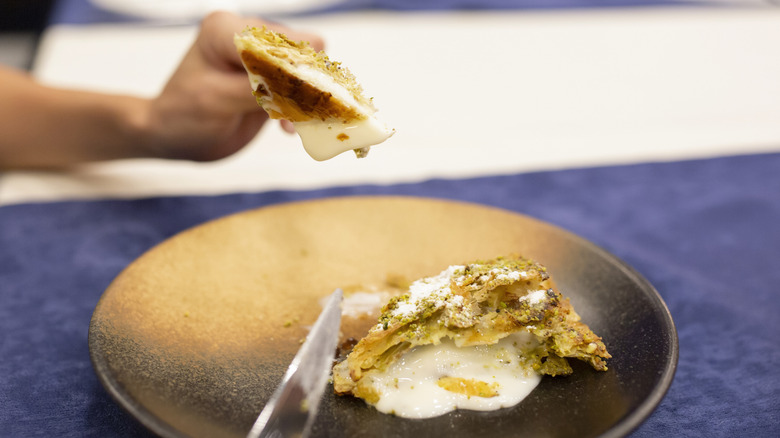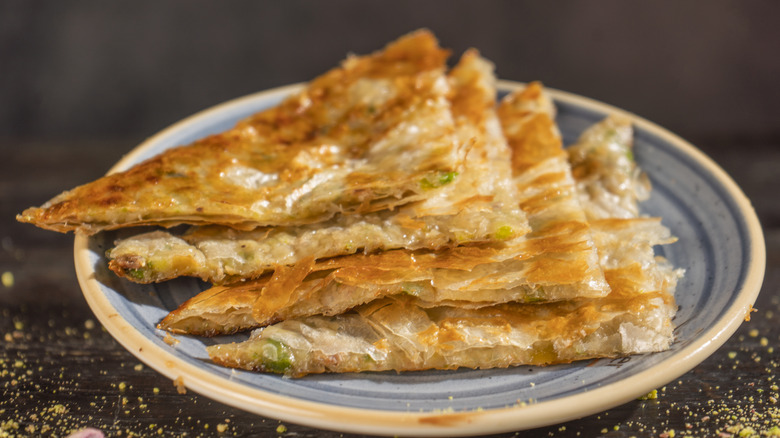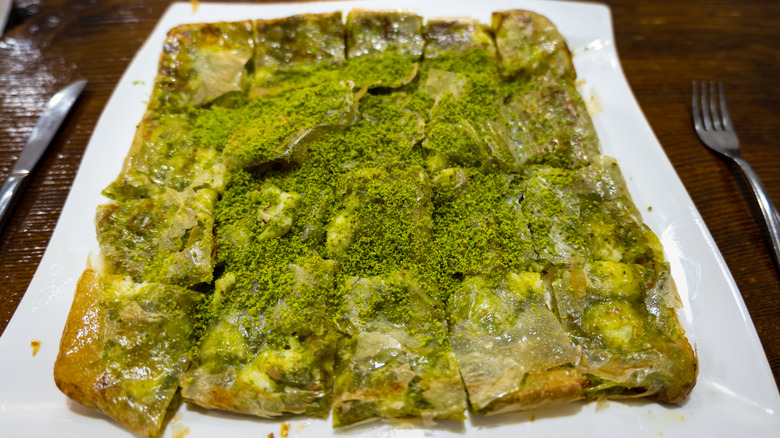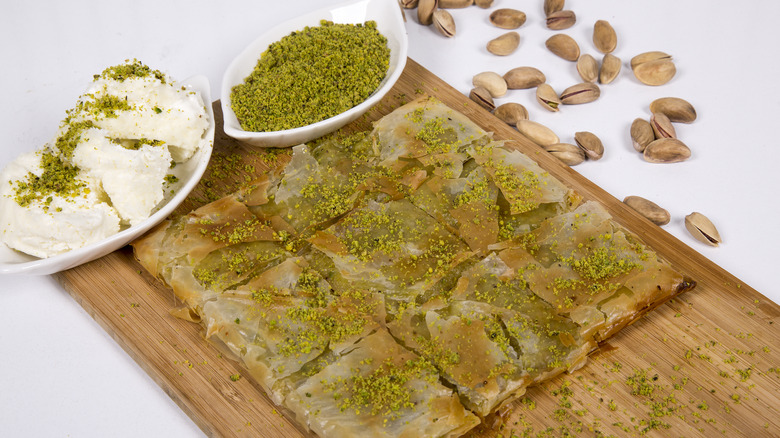Katmer Is The Ancient Pistachio Pastry From Turkey You Should Know
Turkey's most famous pastry may be baklava, but it's only a snippet of the country's sweets. From creamy Fırın Sütlaç, to sweet, chicken-breast-based pudding tavuk göğsü, there's a whole range of desserts to explore.
One of the most simple — yet delicious — is katmer. A dough reminiscent of phyllo, all it takes is water, flour, sugar, and butter to craft this crispy, delectable pastry. The dessert is filled with crushed pistachios and a cream-like product called kaymak. The nuts add a flavor and crunch, and the kaymak a rich texture — a powerful combo for a delicious bite. The food also comes in a range of additional fillings and toppings.
Katmer is interlinked with the Turkish foodie city of Gaziantep, where it's an everyday breakfast. In recent years, it has expanded in popularity all across the country and abroad — and it's easy to see why. Let's dive into what katmer is all about.
Background of katmer
Katmer has a storied link to Turkey, with its creation dating back to at least the 14th century. Multiple renditions exist across the country; the filling alters based on regional produce. However, few varieties are more celebrated than the pistachio-filled katmer from Gaziantep — it's the most identifiable version of the dish.
In addition to being a large-scale pistachio producer, Gaziantep is a UNESCO City of Gastronomy. The city encompasses noted pastry makers of all sorts and Katmer is especially popular as a sweet breakfast among the locals. A handful of producers in the city have operated for nearly a century. The dessert is often served with a tangy lemonade to balance the sweetness, as well as some tea after the meal.
Katmer is often associated with celebrations, especially weddings. Traditionally, the father of the groom delivers the pastry for breakfast after the ceremony. The food is the first bite consumed in the day — a symbol of perpetuating nourishment in the marriage.
Katmer ingredients
Katmer utilizes a phyllo dough, typically made by hand. While dough components differ, the base commonly consists of whole wheat flour mixed with salt, sugar, and butter or olive oil for the fat. Katmer differs from other pastries due to the prominence of oil in its creation.
Pistachios are the most common filling — their texture and flavor meld perfectly with the crispy dough. However, katmer can also be plain or rolled into a croissant-like shape and stuffed with cheese. Other renditions include poppy seed, tahini, and pekmez — a Turkish grape molasses. Newer versions opt for fillings like ice cream or even citrus.
In addition to the pistachios, Gaziantep-style katmer is crafted with kaymak. The clotted cream-like dairy product adds a delicious, creamy touch, and the interior is coated with melted butter for added decadence. Finally, an optional drizzle of honey and powdered sugar round out the toppings.
How to make katmer
For ease, katmer can be crafted using premade phyllo. But to create its uniquely buttery consistency, it's best to knead the pastry by hand. The dough is simple and forgiving — and involves only a few components.
First, the flour, room-temperature water, and salt are mixed in a bowl. These elements are allowed to rest for around an hour. Meanwhile, a combination of olive oil and butter is heated in a pan. Once the dough is ready, it's placed onto a round plate with a spoonful of the oil mixture. The katmer is stretched out over the diameter of the plate, and another dollop of the butter is brushed on top. The process is repeated until there's no dough left.
Next, the filling is arranged on top of the stretched katmer. A generous serving of crushed pistachios is placed atop the dough, along with the kaymak, sugar, honey, and other flavorings. The dough is folded into a square and baked at around 425 degrees Fahrenheit for fifteen minutes. Alternatively, some toast the pastry in a pan. Once finished, garnish with more ground pistachios and serve.
How Katmer is served
Katmer can be prepared in the home, or enjoyed out at a wide variety of establishments. The pastry is cut into small squares and placed onto a metal serving platter, underlaid with parchment paper. It's enjoyed alongside a beverage like tea, ayran, and especially lemonade, which helps cut the sweetness of the pastry with a tart flavor.
There are establishments across Turkey that specialize in katmer. It can be found in bakeries, and serves as a dessert in restaurants. If unsure where to locate katmer, head to a baklava-specialty bakery; the dough is often crafted at dessert shops.
Nothing is quite like a freshly-prepared katmer, whether crafted in the home or purchased out. Served hot, the squares have a delectable crisp, contrasted with a crunchy interior, all underlaid with an airy cream. So, prioritize finding a freshly-crafted katmer to experience the pastry at its very best.
